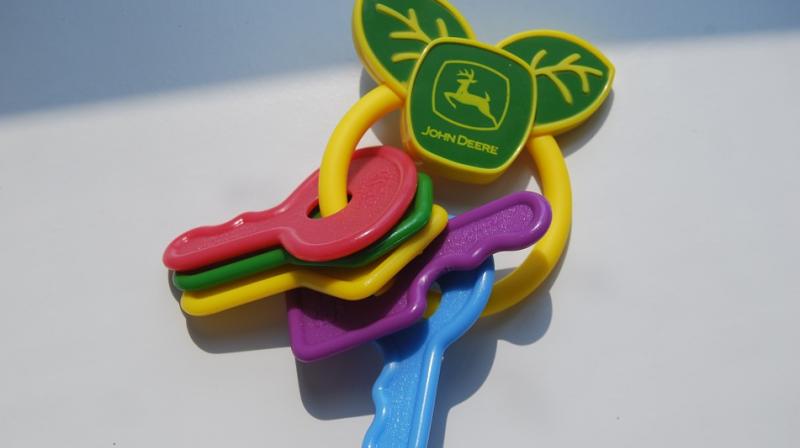Teethers labeled BPA-free may contain hormone-disruptors

Some baby teething toys marketed as non-toxic might contain chemicals that could interfere with hormones involved in normal growth and development, a study suggests.
Researchers tested 59 solid, gel-filled or water-filled teethers purchased online in the U.S. for 26 different so-called endocrine-disrupting chemicals. All of the products tested positive for one such chemical, bisphenol-A (BPA), even though most of the teethers were marketed as BPA-free, researchers report in the journal Environmental Science and Technology.
“BPA has been linked in a wide range of adverse health effects including obesity, diabetes, neurological and developmental disorders,” said senior study author Kurunthachalam Kannan, a researcher at the New York State Department of Health and the State University of New York at Albany.
“We need a stringent regulation to make sure that labels do reflect the reality,” Kannan added by email. Researchers didn’t identify specific products or manufacturers by name in the study.
BPA, parabens and antimicrobials are widely used in personal care products and plastics. In animal studies, endocrine-disrupting compounds such as BPA, parabens and antimicrobials have been shown to interfere with hormones and have harmful developmental, reproductive and neurological effects.
As a result, the European Commission in 2011 restricted the use of BPA in baby bottles, researchers note. The U.S. followed suit a year later, banning it from baby bottles and also from children's drinking cups.
Since then, a growing number of consumer products including baby items have been marketed as BPA-free or lacking in endocrine-disrupting chemicals, the researchers note. But few studies have investigated whether these compounds are used to make teethers or if the chemicals can leech out and be ingested by teething babies.
In lab tests for the current study, researchers found BPA as well as a range of different parabens and the antimicrobials triclosan and triclocarban in most of the teethers. The study also showed that the compounds leached out of the products' surfaces into water.
Researchers also looked at how long babies might typically use teethers, and based on the body weight of a typical one-year-old they estimated that exposure to BPA and other endocrine-disrupting chemicals might be below levels deemed unsafe by health regulators in Europe.
However, regulators set these thresholds for individual compounds and not every endocrine-disrupting chemical found in the teethers is regulated, the authors point out. One limitation of the study is that its estimates of exposure to BPA and other chemicals might not reflect regular use for some babies in real life, the authors note.
“BPA-free doesn't necessarily mean that the product is completely nontoxic,” said Dr. Luz Claudio, a researcher at Mount Sinai School of Medicine in New York who wasn’t involved in the study. “As this study showed, there are other chemicals that also have potential biological effects,” Claudio added by email. “Whether they're actually toxic to children, is not really known.”
Even so, the findings add to a small but growing body of evidence suggesting that a BPA-free label may not protect against exposure to chemicals, said Dr. Martin Wagner, a researcher at Goethe University in Frankfurt, Germany, who wasn’t involved in the study.
The results should be a reminder to parents to avoid plastics and chemicals as much as possible in their home, Wagner said by email.
“Avoiding chemical exposures today is simply impossible,” Wagner said. “However, parents can significantly reduce their kids’ exposures by reducing the use of plastic materials wherever possible.”
This might mean letting babies teethe on frozen carrots instead of plastic rings, or avoiding pre-packaged meals in plastic containers, or seeking out baby care products without additives, Wagner added. “Many of these decisions have something to do with convenience,” Wagner said. “If we overcome this at least partly, we will reduce the chemical exposures of our children and help the environment. I would call that a win-win!”

